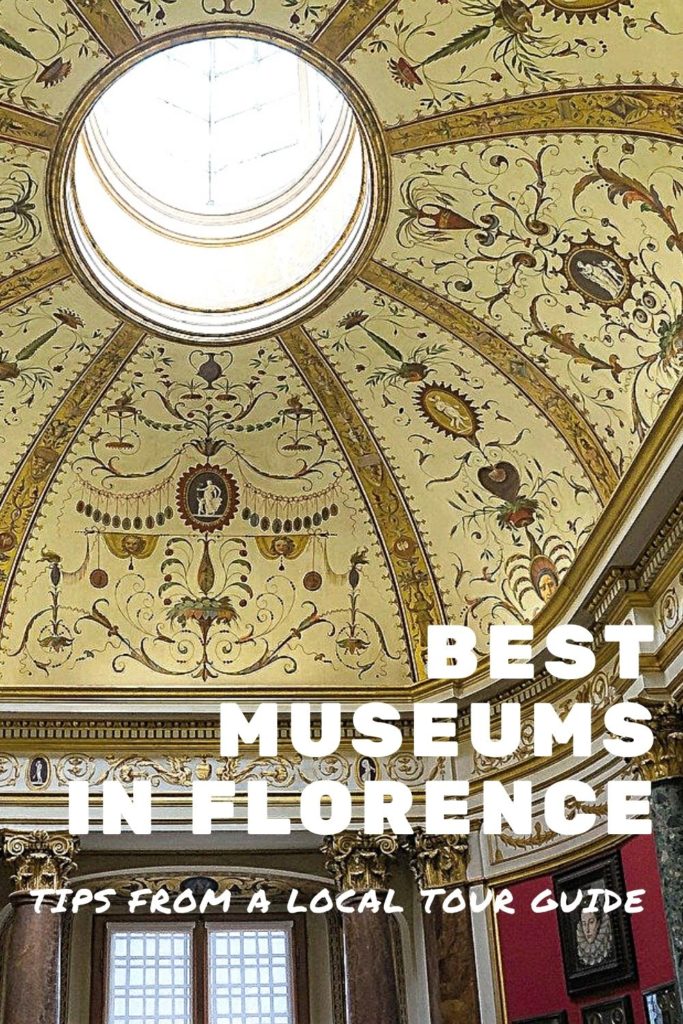Museums in Florence: a complete guide to choose the best ones
There are so many galleries and cultural spots in Florence that it can be confusing and overwhelming to decide which ones to visit during your stay; that’s why I made this post about the best museums in Florence. I have updated this blogpost so many times that it has become a complete guide to all the most important museums and galleries of the city, and also of the most underrated ones.
I know it’s just impossible to visit all of them during one trip: that’s why I am giving a general view on each one of them. Then it’s up to you to decide which ones to visit, according to the length of your stay and your taste.
I am Claudia, a licensed tour guide of Florence with over 10 years of experience. Learn more about my Florence private tours.
Keep in mind that a licensed local tour guide can really make a difference for your experience! With someone like me you won’t only get all the explanation needed to fully understand the art pieces you’ll be seeing. But you’ll also optimize your time (especially in big museums), being sure to hit all the most important masterpieces… And not spending all of your time in search of them. If you are planning a trip to my beautiful city, you might find useful also this one: things to know before going to Florence
Museums of Florence: how they work
There are different types of museums in Florence, each one has its own rules and works differently. It’s not easy to know and understand how they all work, I hope this little guide will be useful to organize your trip and your visits in the best way.
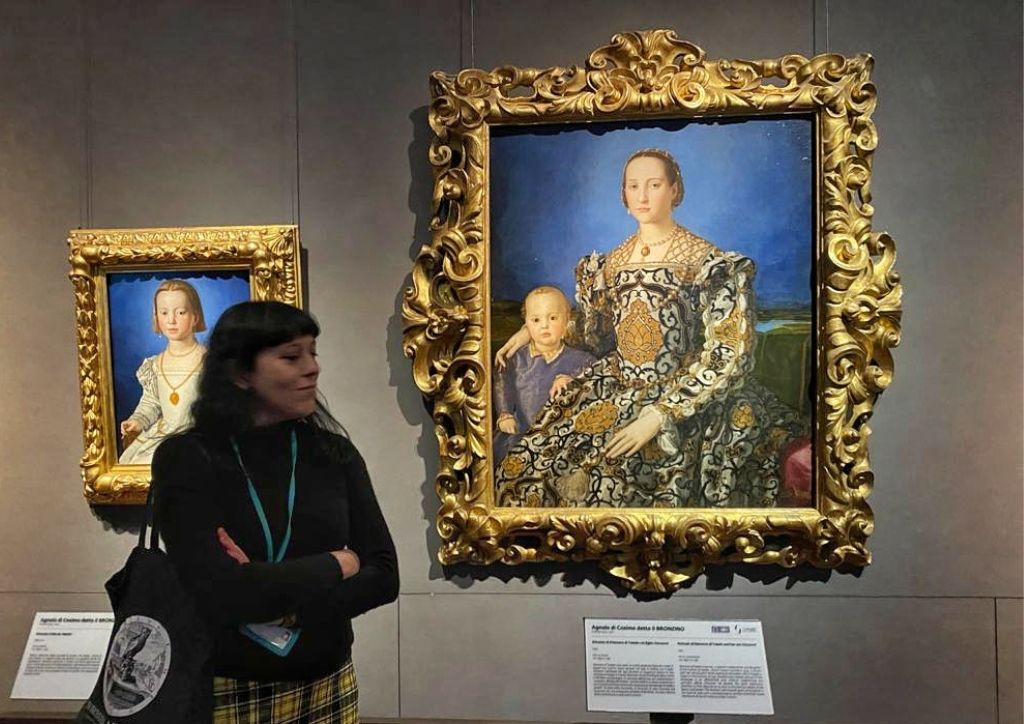
National Museums
They are managed directly by the Ministry of Cultural Heritage, and they all have the same opening days and hours (with some exceptions). You can buy tickets for all the national Florentine museums on the official web-store, which is B-Ticket. The tickets have a timed entry, when you book you will have to choose the day and time of the visit. Most of the national museums, including the Uffizi and Accademia Gallery, are generally open every day except Mondays, from 8.15 am to 6.45 pm. The most famous national museums in Florence are:
- The Uffizi Gallery
- The Vasarian Corridor
- The Accademia Gallery
- The Medici Chapels
- Boboli Gardens and Pitti Palace
- Bargello
Musei Civici Fiorentini (Florentine city museums)
These museums are managed by the municipality of Florence. The most important ones are:
- Palazzo Vecchio
- Santa Maria Novella church
- Brancacci Chapel
- Stefano Bardini Museum
Tickets can be booked on the official website of the Civic Museums.
Unfortunately, tickets for these museums are released once a month, only one or two months before the dates, so it’s impossible to book them well in advance. On the same official website you can check the opening days and times of each museum, because they all have different rules.
Private museums
Private museums are often managed by foundations, and there are many of them, of different types. For example, there are the museums of the big fashion brands such as Ferragamo and Gucci, but this category also includes most of the churches that can be visited for a fee, such as the church of Santa Croce and the entire complex of the Duomo, including the climb to the dome and the Opera del Duomo Museum. Each of these museums has its own rules, its own hours etc, there is no fixed rule. So, even regarding the booking of tickets, each one has its own website and its own booking system.
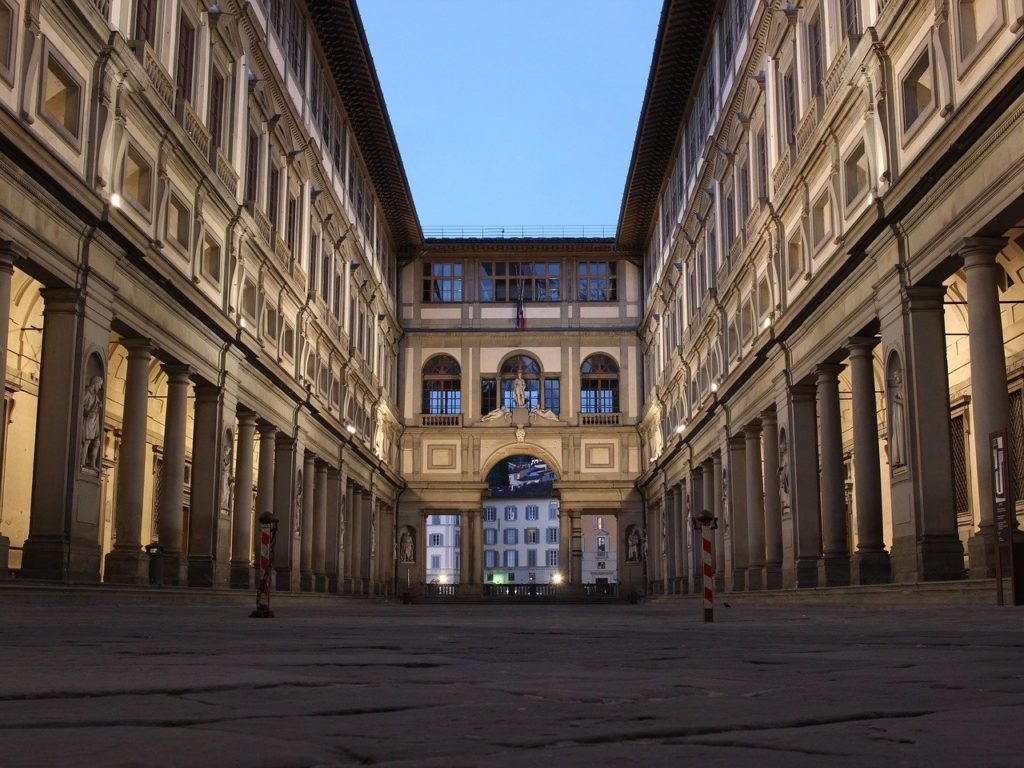
Best museums in Florence not to miss
In this paragraph you will find all the most important museums and art galleries in Florence, the ones I recommend you visit on your first trip. I would say that the Uffizi and the Accademia Gallery are truly unmissable, you really shouldn’t skip them even if you’re staying in Florence just for a couple of days.
I understand that you will hardly have enough time to visit all the museums I mentioned, but you can choose the ones that interest you the most. Also, I advise you to decide which museums to visit based on the weather: Boboli Gardens and the church of Santa Croce are so hot in summer that a visit can turn into a sweaty nightmare.
In the following paragraph, instead, you will find the small museums of Florence, the less known and therefore less crowded ones. Ah, there is a special paragraph for those churches which are also art museums, such as the Duomo, Santa Maria Novella and Santa Croce.
Uffizi Gallery
One of the most famous art galleries in the world, in a wonderful building from the 1500s. It’s mostly famous for the paintings of the masters of Renaissance, such as Michelangelo, Leonardo da Vinci, Raffaello and Botticelli, but the painting collection ranges from the 1200s to the 1600s. There’s also an important collection of ancient greek and roman statues. The Uffizi is probably the biggest legacy that the Medici family left to Florence.
This museum is huge and can take hours to be visited! Get ready to spend at least 2 hours there, or even more. I always recommend to book the tickets in advance, especially in summer. I have wrote many blog posts about this museum, a good starting point is the one with all my best tips for visiting the Uffizi Gallery.
The best way to visit the Uffizi is with a guided tour: you’ll be able to see the best of the collection without wasting unnecessary time. If you want to take a private guided tour of the Uffizi Gallery, check my Uffizi private tour. If you instead prefer to share the visit with a small group, check those ones on Viator:
Accademia Gallery
The Accademia Gallery houses a rich collection of paintings from the Middle Ages and Renaissance; but that’s not the reason why 2 millions of people visit this museum every year. We’re all coming here for the most famous statue in the world: David by Michelangelo. The Accademia Gallery has 6 more statues made by Michelangelo: Pietà di Palestrina, Saint Matthew and the 4 Slaves (Prigioni). There is also Museum of Musical Instruments and a rich collection of plaster models from the 1800s. Apart from Michelagelo’s one, my favorite artwork is the Cassone Adimari, with a beautiful wedding scene from 1450.
The Accademia Gallery is smaller than the Uffizi and generally requires less time (most of the people stay for less than one hour, just to see David). I once again highly recommend to book the tickets in advance, the queues can be a nightmare from May to October. You can find all the information you need to plan your visit in the blogpost with all my tips for visiting the Accademia Gallery in Florence, a short list of the unmissable artworks to see there.
If you want to take a private guided tour of the Accademia Gallery, check my Accademia private tour. If you instead prefer to share the visit with a small group, check those ones on Viator:
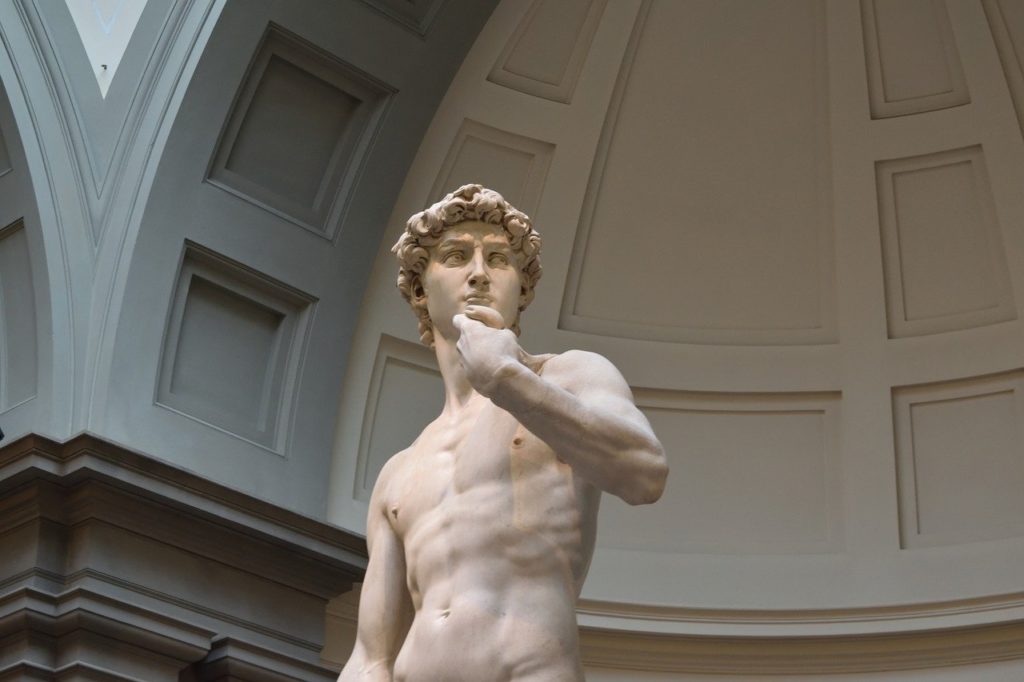
Boboli Gardens and Pitti Palace
Pitti Palace, the magnificent residence of the Medici built in the 1500s, is today a huge complex with 5 different museums: the Palatina Gallery, the Gallery of Modern Art, the Treasury of the Grand Dukes, the Gallery of Costume and Fashion, and the Imperial and Royal Apartments. The last and more beautiful one is the Boboli Gardens, a true open air museum with nature, art and architecture.
It’s impossibile to visit all the 5 museums in one time. Personally I recommend those museums only if you are really interested in one of those subjects. Or if you have loads of time. But Boboli Gardens is really unmissable for anyone! In summer can be very hot, so go there in the early morning and wear some comfortable walking shoes because the gardens are huge.
The ticket for Boboli Gardens also include the entrance to Giardino Bardini, another beautiful garden very close to Palazzo Pitti.
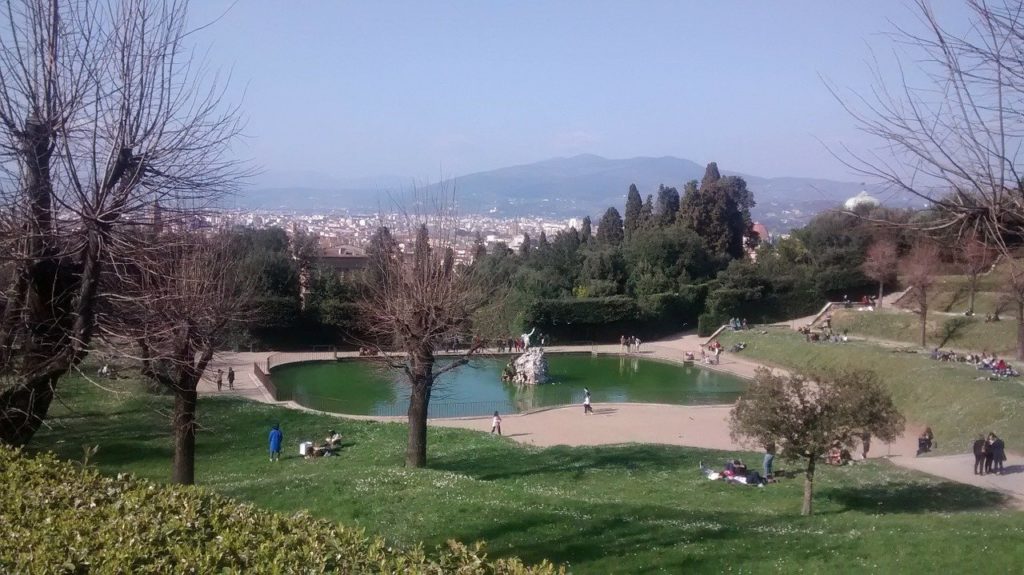
Best museums in Florence: Palazzo Vecchio
The heart of the politics of Florence since the late 1200s. Today Palazzo Vecchio is still used for the administration of the city, as it’s the town hall of Florence. But it’s also a wonderful museum, rich in frescoes, paintings and sculptures from the greatest names of Renaissance, included Michelangelo and Raffaello. My favorite room is probably the Sala dei Gigli (the hall of the lilys) with the wonderful bronze sculpture by Donatello, Judith and Holofernes. And the Hall of Geographical Maps too. I also love the cutest, little sculpture by Verrocchio, the Putto with a Dolphin: it used to be in the first courtyard of the palace (where today there’s a replica), now it’s inside Palazzo Vecchio, on the second floor.
Don’t miss the stunning Hall of the 500s, with the large frescoes and the decorated ceilings by Giorgio Vasari. You can also climb the tower of Palazzo Vecchio to enjoy a wonderful view from the top! Here you can find more information about the museum of Palazzo Vecchio and the climb to the tower.
Bargello
Built in the late 1200s, used for centuries as tribunal, prison and gallows, the Bargello is a massive stone building looking like a medieval castle, with a tall tower. The building itself is a masterpiece of medieval architecture, with a beautiful courtyard decorated with ancient stone crests. Today the Bargello is the national museum of sculptures, housing four wonderful sculptures by Michelangelo: the Bacchus, which he made when he was only 22 years old, the Tondo Pitti, the David-Apollo and the Brutus. Among my favorite works are the two bronze Davids that were made before Michelangelo’s: the one by Donatello and the one by Verrocchio.
If you are into Renaissance sculpture you really shouldn’t miss this one! Remember that Bargello, unlike other national museums that are closed on Mondays, is closed on Tuesdays.
Opera del Duomo Museum
The Museo dell’Opera del Duomo is dedicated to the making, maintaining and restoring the huge complex of the Duomo. The most famous pieces are the sculptures by Donatello, Michelangelo, Giotto and many other great names.
But you’ll also learn how Brunelleschi made the dome, seeing the original scaffoldings and tools he used, and even the wooden model he made in the 1400s. The room dedicated to the original medieval and renaissance sculptures of the facade is just amazing, also because of the architecture of the room itself. This is definitely one of my personal favorites among the many ones.
The entrance ticket to that museum is always included with the ones for climbing the Dome and the Giotto’s bell tower, so don’t miss the chance to visit it, it’s rarely crowded. You can find more information in my blogpost about the Opera del Duomo museum.
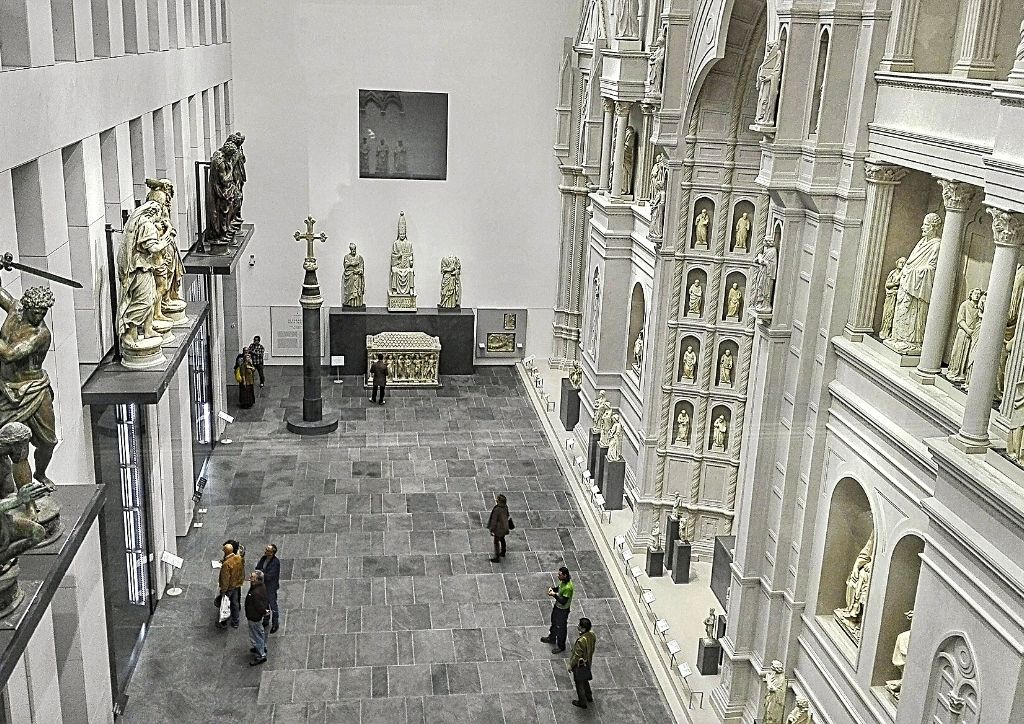
Medici Chapels
The museum of the Medici Chapels is a part of the church of San Lorenzo, and is including two different areas of the church. The first one is the New Sacristy (Sagrestia Nuova), a masterpiece of sculptures and architecture designed by Michelangelo to host the graves of Lorenzo the Magnificent and his brother Giuliano de’ Medici.
The second part is the Chapel of the Princes (Cappella dei Principi). It’s the very last and most opulent monument the Medici made: here is where most of the members of the family are buried. The chapel is decorated with a super expensive technique of mosaics made of semi-precious stones. That technique, called commesso fiorentino, is unique, typical and exclusive of Florence: you won’t find it anywhere else in the world (unless it was a gift from Florence to someone living somewhere else!).
Learn more about this gorgeous place in the blogpost about my private Medici Chapels tour.
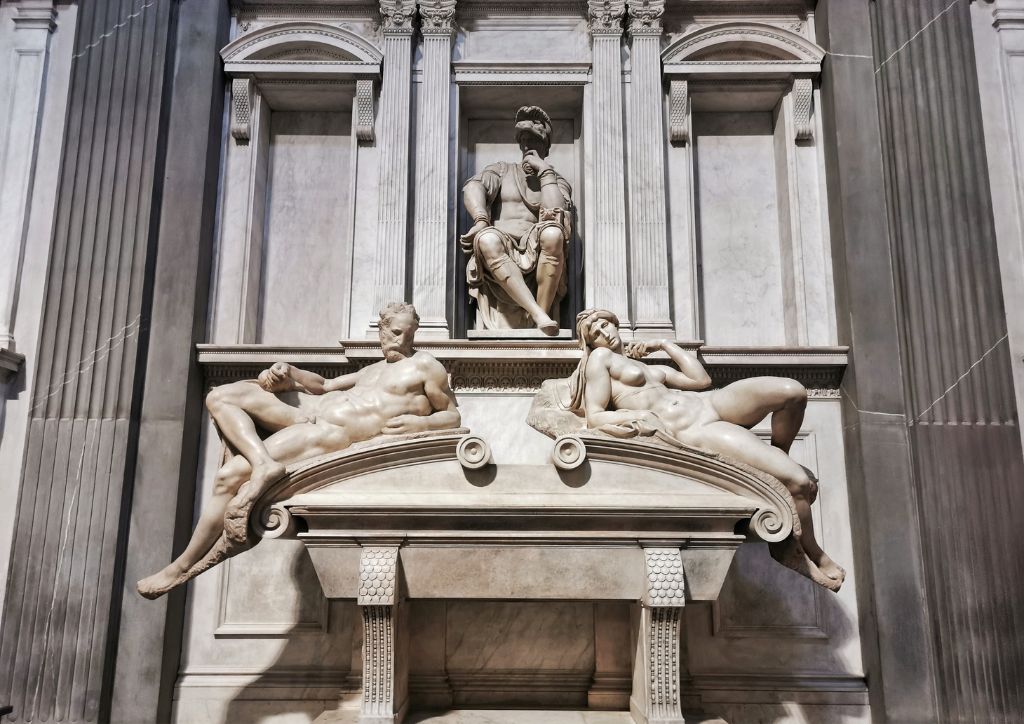
Churches that are also museums
Some of these churches are part of two friars’ convents since the Middle Ages. And the friars still live and carry out their activities here today. But those churches are also museums in all respects, with their very rich art collections exhibited in the halls of the convents, and with their peaceful medieval cloisters where you can stroll.
The Duomo complex: cathedral, dome, baptistery and bell tower
The Duomo complex is made up of several buildings:
- the cathedral
- The climb to the dome
- The Baptistery of Saint John
- Giotto’s Bell Tower
- The Crypt of Santa Reparata (under the cathedral)
- The Opera del Duomo Museum (see the paragraph above)
There are several tickets available to visit them, which always include the Opera del Duomo Museum and the crypt. The Ghiberti pass is the basic ticket, the Giotto pass also includes the bell tower, and the Brunelleschi pass is the most complete, which also includes the climb to the dome. The most popular is definitely the climb to the dome. Since the places for each time slot are limited, they sell out very quickly, so book them as soon as you can. Entrance to the cathedral is free, and for this reason there is always a long queue.
The opening hours are different for each of these monuments (they also depend on the celebrations of religious services), and you can check them on the official website of the Opera del Duomo, where you can also buy tickets.
I wrote a very detailed post where I explain how tickets work and where you can find all my tips for visiting the Duomo of Florence (including climbing the dome), you will find all the information you need to organize yourself.
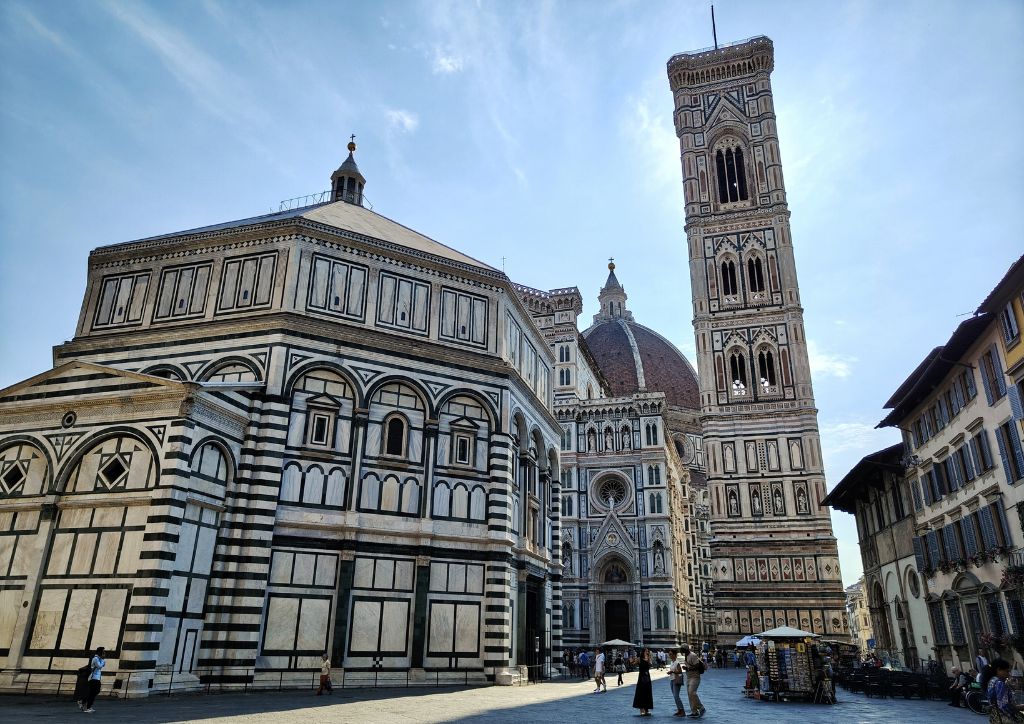
Santa Maria Novella Church
The church of Santa Maria Novella is a convent founded by Dominican Friars in 1221. The church was renovated in the XIV century, and decorated with paintings, frescos and sculptures made by the biggest names of art. Giotto, Ghirlandaio, Filippino Lippi, Botticelli, Brunelleschi, Masaccio, Paolo Uccello and much more.
The church has so many masterpieces and artowkrs that it’s also including a museum: some of the paintings that have been removed from the church over time are displayed in some rooms of the convent. You can also visit the three beautiful medieval cloisters of the convent.
The church of Santa Maria Novella has an ancient and beautiful pharmacy, founded in 1221 and still active today.
- Find out more about the ancient apothecary of Santa Maria Novella.
- Learn more about my private Santa Maria Novella tour.
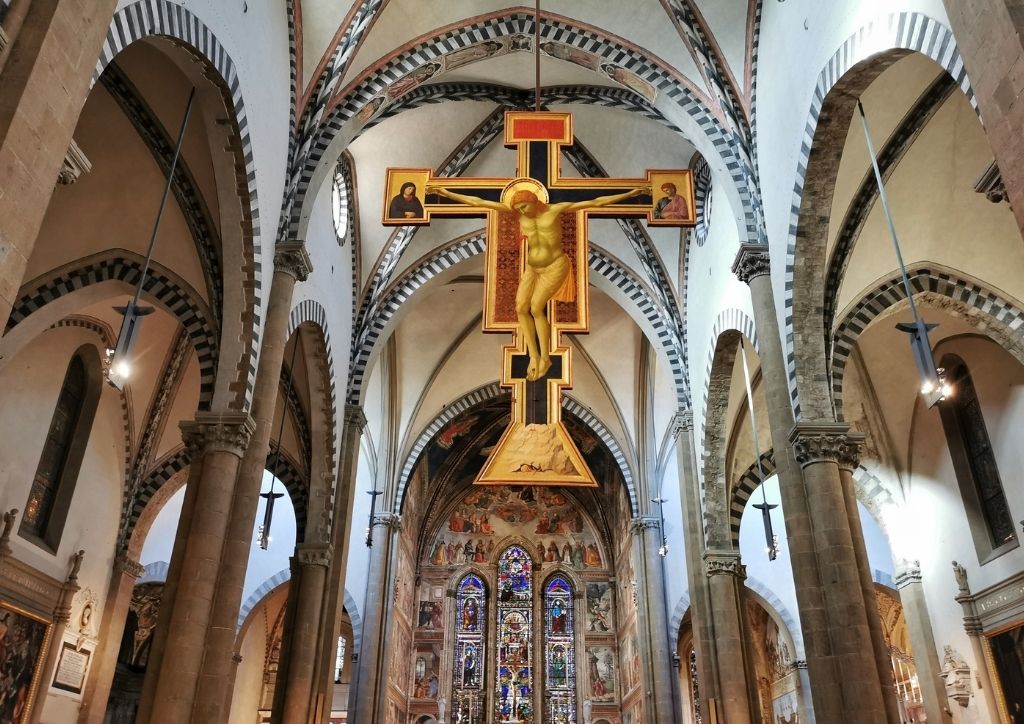
Santa Croce church
Even the church of Santa Croce is part of an ancient convent of Franciscan friars. It was founded in the early thirteenth century, when St. Francis was still alive, by some of his very first followers.
The current church was built starting from 1294, and is an excellent example of Italian Gothic architecture, designed by the architect Arnolfo Di Cambio. Inside there are artworks by Donatello, Giotto and his master Cimabue, Brunelleschi and many other big names of Medieval and Renaissance art.
Santa Croce is also the burial place of the most important personalities of Tuscany and Italy. In magnificent marble monuments rest Michelangelo, Galileo Galilei, Niccolò Machiavelli, Ugo Foscolo, Vincenzo Bellini…
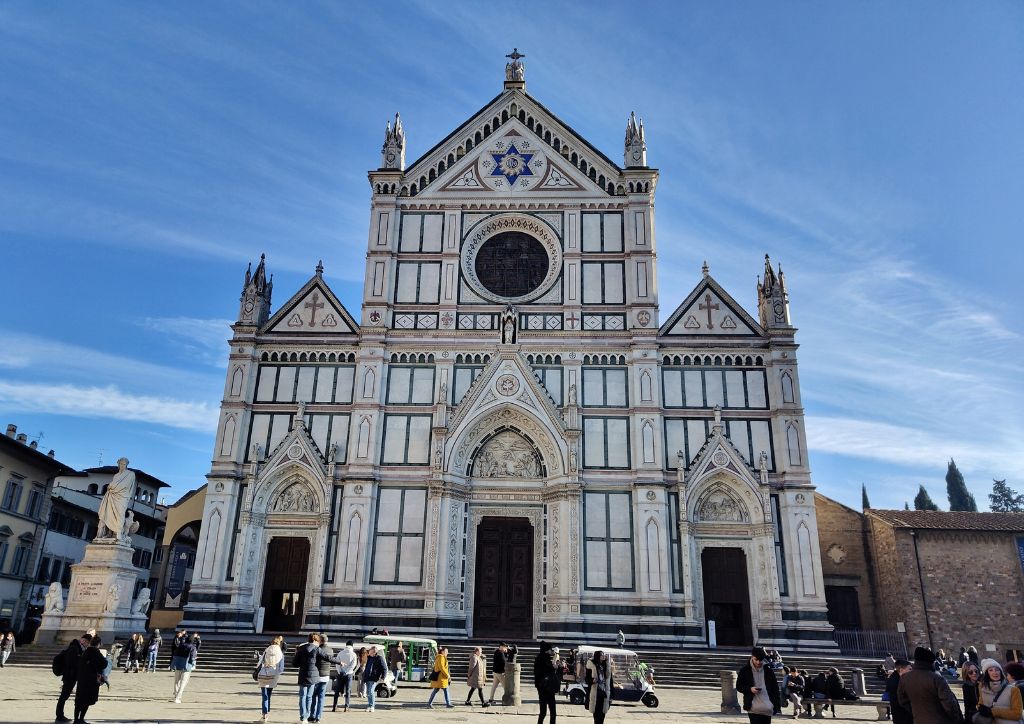
Most underrated museums in Florence which are never crowded
If you have a lot of time available, or perhaps you have been to Florence before and have already visited the main ones, in this paragraph you will find some ideas for other, lesser-known museums to discover.
Did you know that there are over 70 museums in town? Some of the best museums of Florence are small museums, underrated and therefore not very crowded. Actually, they are often quite deserted! Especially on weekdays. Here are some of my favorites that I recommend you to visit:
Opificio delle Pietre dure Museum
A small but very fascinating museum, which tells the story of a very precious and unique artistic technique, created for centuries only in Florence. I’m talking about the commesso fiorentino, a kind of mosaic of semi-precious stones (such as marble, granite, mother of pearl or lapis lazuli) cut and assembled with precision, to form images. The commesso fiorentino technique was used to decorate the Chapel of the Princes, one of the Medici Chapels. That’s where the last members of the Medici family are resting.
The museum tells the story of this artistic technique through artifacts, tools, stones and many other objects. You can learn more about the Opificio delle Pietre Dure Museum in my blogpost about it.
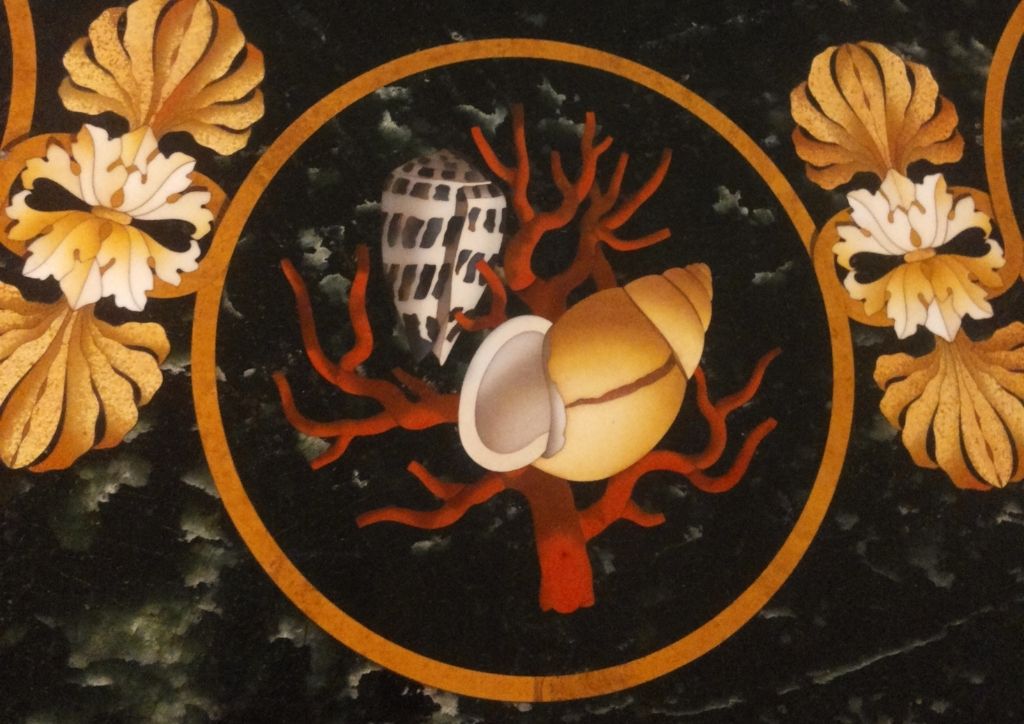
Museo Stibbert – Stibbert Museum
Frederick Stibbert, half Florentine and half English, was an art collector of the second half of the 19th century, passionate about medieval Italian art as well as oriental cultures such as Japanese. During his life he collected his countless collections in the Villa Stibbert, which looks just like a medieval castle full of wonders from the past. Today Villa Stibbert has become the Stibbert Museum. The collections include weapons and armor from all over the world, paintings, furnishings, porcelain, jewelry, fabrics, books and much more. The layout is still the original one desired by Frederick Stibbert.
- Stibbert Museum is located outside the historic center, you can get there with a bus ride of about 20 minutes (bus no. 25) from Piazza San Marco.
Museum of the Innocenti Institute
The Innocenti Institute was the very first institution in the word, specifically dedicated to children. Founded in 1419, for centuries it has welcomed children in need of help. It was not only an orphanage, but also helped families who, due to poverty, could not take care of their children, and also single mothers. The institute is still active today. The museum tells the story of this extraordinary place through splendid works of art. Brunelleschi designed the architecture of the Innocenti Hospital, and some of the paintings were made by Botticelli and Ghirlandaio.
I am very attached to this place, because for three years I was one of internal tour guides of the museum, I love it and I know it very well. Find out more about the Innocenti Museum.
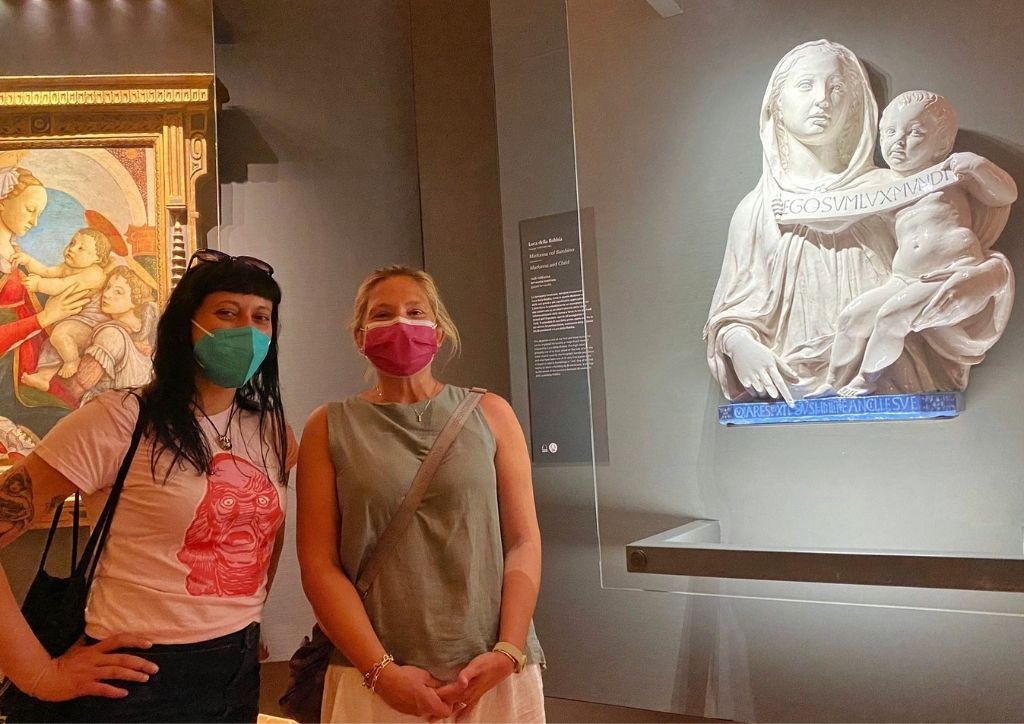
Museo di Palazzo Davanzati – Davanzati Palace museum
In an ancient palace of 1300, once belonged to a rich merchant family, we can discover the daily life of the past in Florence. There are antique furniture, precious works of art and typical medieval architecture, from the kitchen to the bedrooms. Almost all the rooms are painted with frescoes, and some graffiti have even been found on the walls dating back to the Renaissance. This museum is perfect for children too!
For information on the opening hours of Palazzo Davanzati Museum check the official website.
La Specola Museum
The oldest science museum in the world, founded in 1775, houses several scientific collections of the Natural History Museum. The zoological collection is so ancient that among its taxidermized animals there are some now extinct. Other specimen used to belonged to the Medici.
But above all, the Specola is famous for its collection of anatomical waxes from the 18th and 19th centuries, unique in the world. It is my absolute favorite museum, and I have studied the history of anatomical waxes for a long time. They are real works of art, even if their main purpose was to educate medical students.
- In 2024 La Specola has reopened after a long restoration of the building, and new collections has been displayed.
- Find more information and some photos in the post dedicated to La Specola Museum.
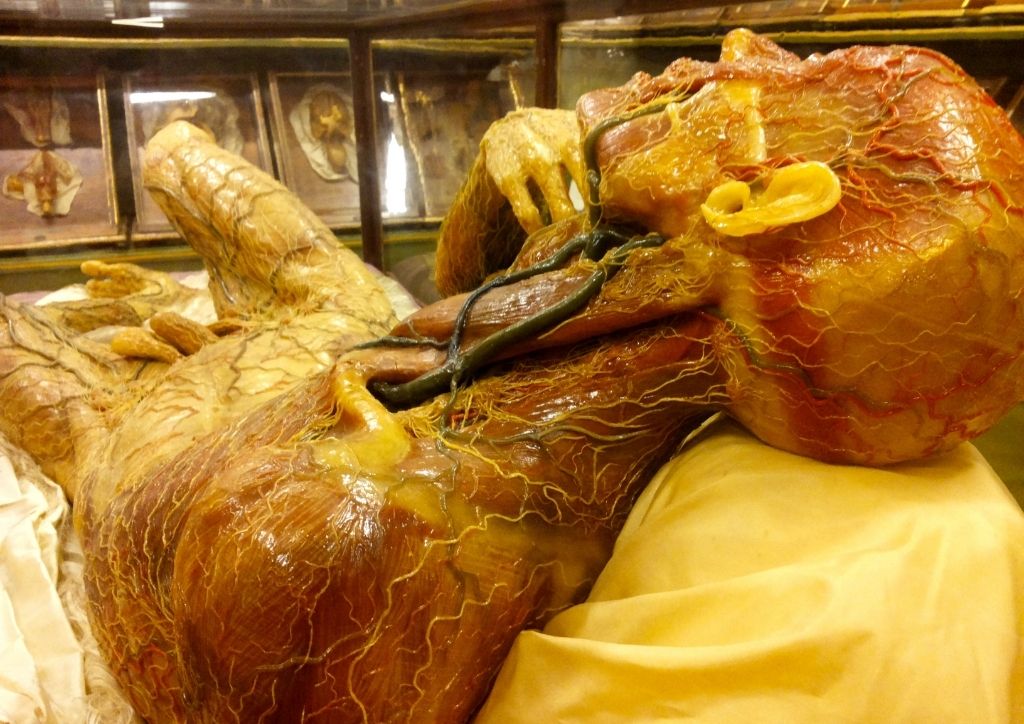
Bardini Museum
Called the blue museum due to the walls painted in deep blue, the Bardini Museum is the legacy left to the city of Florence by the art dealer Stefano Bardini at the beginning of the twentieth century. Bardini specialized in medieval and early Renaissance art. The museum displays paintings and sculptures by great names in art such as Donatello, Pollaiolo, Tintoretto and Andrea della Robbia.
The museum is worth a visit also for its beautiful layout, still the same one commissioned by Stefano Bardini a century ago. The deep blue walls make a stunning contrast with the works of art made of pietra serena, the soft and grey stone which is so typical of Florence. I can’t believe how beautiful and underrated is.
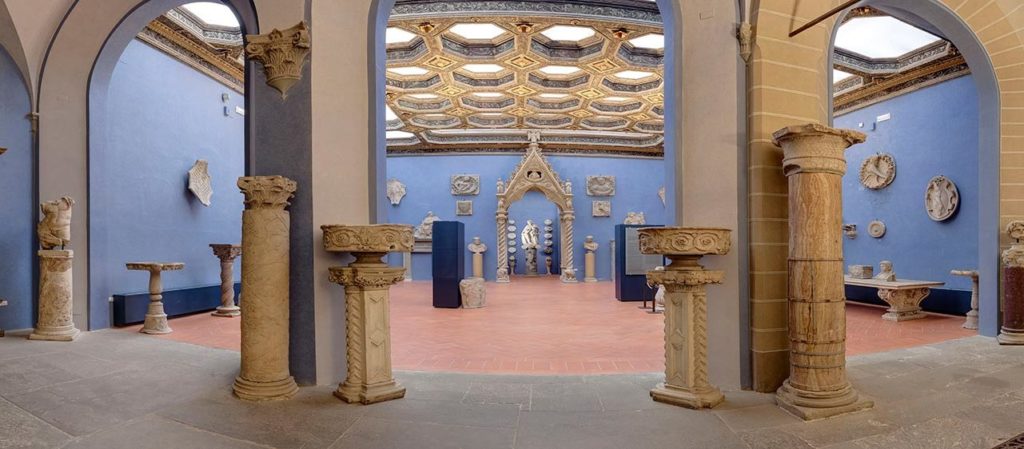
Museums open on Mondays
Most national museums are closed on Mondays, including the two most important ones, The Uffizi and the Accademia Gallery. Monday is the perfect day to do a walking tour, or a day trip to Cinque Terre. But there are many other museums that you can visit on Mondays, I have collected them in a list:
- The whole Duomo complex (Cathedral, bell tower, baptistery, museum)
- Palazzo Vecchio
- Bargello
- Cappella Brancacci
- Santa Croce Church
- Santa Maria Novella Church
- San Lorenzo Church
- San Marco Church and Covent
- Boboli Gardens
- Palazzo Medici Riccardi
- Innocenti Museum
- Palazzo Davanzati
- Opificio delle Pietre Dure Museum
- Stefano Bardini Museum
- Museo Stibbert
- Casa Buonarroti
Best museums for kids in Florence
Florence is also a perfect destination for families with children, and there are many museums suitable for them, where they can learn new things in a fun way, and take home many beautiful travel memories.
The most child-friendly museums in Florence are:
Leonardo da Vinci interactive museum
A museum designed for kids and teenagers, but that is always a big hit with parents and tour guides. In the museum there are no paintings or original works by Leonardo da Vinci, but wooden reconstructions of many of his machines and inventions. The kids can touch, play and operate Leonardo’s machines, understand how they work and learn new things about science and this fascinating Renaissance figure.
You can buy online the entrance ticket to the Leonardo da Vinci interactive museum on the official website. The museum is located in via de’ Servi, a few steps away from the Duomo and the Accademia Gallery. In summer it is very crowded and I recommend you book a few days in advance.
Museum of Pinocchio and vintage toys
A wonderful museum which is still quite unknown, but definitely worth a visit. The Museum is mainly dedicated to Pinocchio, and tells the story of the most famous puppet in the world through a rich collection of objects and memorabilia from all over the world (but especially Italian). Old toys, books and comics, ceramics, works of art by contemporary artists, and much more. The collection is a real leap into the past and into the world of Pinocchio, and parents also love it. For children there are many activities to do, such as drawings, puzzles and much more.
The Museum of Pinocchio and vintage toys is located in Piazza Duomo, very close to the entrance of the Opera del Duomo Museum. Speaking of Pinocchio, did you know that this character was born in Florence? Find out more about the connection with the city and all the places of Pinocchio in Florence in this post.
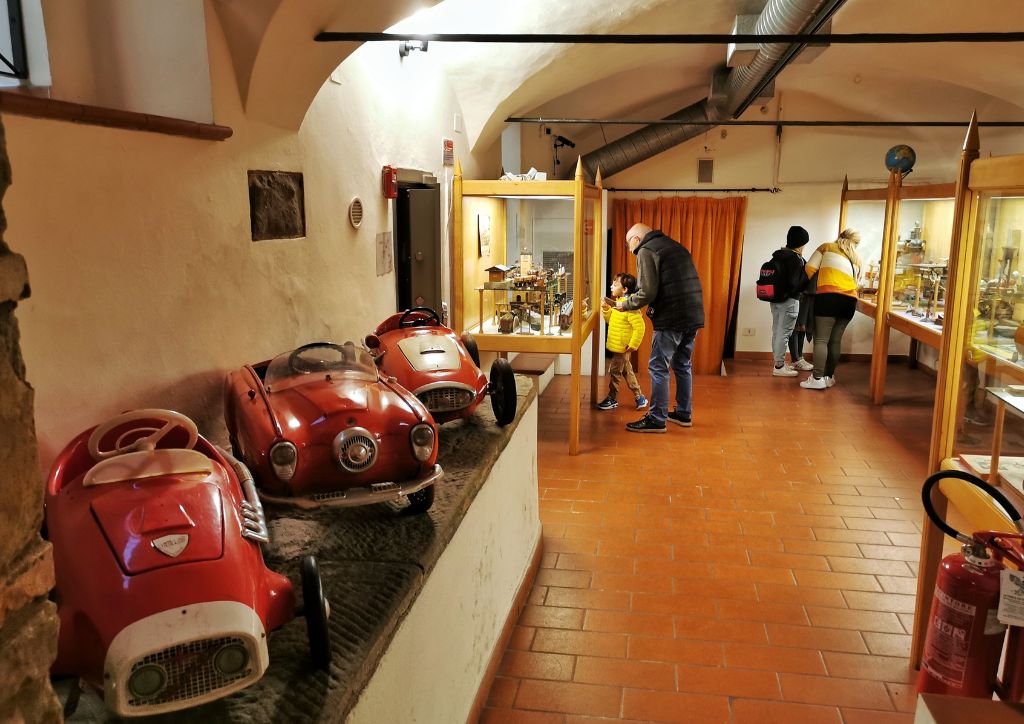
HZERO museum
HZERO is a unique museum in Italy, which will drive not only children crazy, but also model-making, train and railway enthusiasts. Inside you can see a huge model railway of 280 square meters (over 3000 square feet), of course fully functional. It is the largest model railway in Italy, and was created over 40 years by a group of model-making enthusiasts. The model reconstructs many scenarios and landscapes, from the streets of Berlin to the mountains of the Dolomites, and over 90 different trains from different eras run on its tracks. The museum often organizes special days with events, workshops for kids and model-making courses.
The museum is in Piazza degli Ottaviani 2/r, very close to the square and the church of Santa Maria Novella. Tickets can be purchased online, both for the museum and for the educational workshops for children.
Furthermore, in the main Florentine museums, such as the Uffizi and the Accademia Gallery, you can take private tours designed especially for kids, which make the history of art exciting and understandable even for the youngest.
I hope you fund this information useful! Have you already chosen which one of the best museums of Florence to visit during your vacation?
Also read my tips for planning a travel to Florence
